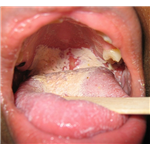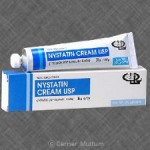 What is thrush in general
What is thrush in general
- Thrush is an infection caused by a yeast which is a small living fungus called candida.
- Most people have candida on their skin, in their mouths (oral thrush) , in the genital region and in their gut most of the time without having any problems from it.
- Babies and young children can get thrush in the mouth and on the skin, when occurring on the skin it is called as a nappy rash.
- Breastfeeding mothers can also get thrush on their nipples, causing pain when feeding. This is often caused by the transmission of candida from the baby’s mouth to the mother’s nipple or the other way round.
- Women can get thrush in the vagina, with itchiness and a discharge.
How to differentiate between milk patches and thrush patches in the baby mouth
Thrush is quite a common oral or mouth infection in the babies’ mouths. The yeast infection causes a white coating that forms on the tongue and the inside of the mouth of the baby. Here is where most parents are confused between milk patches and thrush patches. Milk patches form because after a baby has milk the papilla or projections on the tongue which is naturally retains the milk and make it look like white patches on the tongue. The manner in which you can differentiate thrush from milk patches is that thrush patches cannot be removed easily with a wet muslin cloth and the coating is persistent and does not go away in between feeds too. Furthermore, in the event you try to rub it off really hard, a red inflamed surface at the bottom of the thrush will be visible. Other signs and symptoms or oral thrush in babies are listed below.
 Symptoms of baby thrush
Symptoms of baby thrush
- Many babies usually get thrush in the mouth in the first few weeks or months of life.
- The first signs of baby thrush may be that the baby is irritable or grumpy, especially when feeding because their mouth is probably feeling sore. However, some babies are not bothered at all.
- White patches on the roof of the mouth and inside the cheeks and on the tongue are usually present
- There may be redness around the white patches, and they might look like ulcers.
- Sometimes the baby will have a nappy rash which may also have thrush in it.
- Bad breathe can also be a sign.
- If an older child or adult gets thrush in the mouth, ulcers or that look like they may be thrush, it may be a sign of another disease as a child’s immune system should have been good enough to fight of the yeast.
How to prevent thrush in babies
- Ensure the babies’ immune system is strong and well protected. You can do this by having the babies vaccination’s on time and also provide a healthy and balanced diet for your child.
- Probiotics can also be given to the baby to increase their good bacteria in their body.
- Yogurt have also been said to help prevent thrush infection in babies.
- If a parent themselves have a thrush infection treat it immediately to prevent contagious spread to the baby, as new born infants are very susceptible.
- Always wash your hands properly and maintain good hygiene for you and for the baby.
- If you are bottle feeding, clean and sterilize teats and dummies to prevent thrush infection.
- Do not allow your baby to share dummies or toys which are inserted into the mouth.
- Always clean and sterilize your babies toys, dummies and bottles.
- Be careful with the use of antibiotics, as they have been known to cause thrush infection in babies as well as mothers.
- If you are breastfeeding, ensure that your nipples are thoroughly cleaned so that no thrush infection can spread to the baby and vice versa.
 Treatment of oral thrush for babies
Treatment of oral thrush for babies
- If you think your baby may have thrush in the mouth, you will need to go to a doctor or child health nurse to be sure, and to get advice about treatment because the diagnosis of thrush infection in babies can only be diagnosed by Doctors on sight.
- Nystatin is usually used for the treatment of oral thrush for babies. Nystatin drops or a gel is usually spread around the inside of the mouth and on the tongue.
- You will need to treat the baby’s mouth 3 or 4 times a day for a few days.
- If the baby is breastfeeding, the mother’s nipples may need to be treated with Nystatin at the same time as the baby to prevent the infection passing back and forth.
Pingback: How to Sooth a Toothache of a Teething Baby | Intelligent Dental
hi, this is great information for me especially right now im expecting our first baby, this will be very helpful for me, as some of my friends had this before in their babies and we thought it was just a normal milk patches in baby’s mouth and we can just clean it with cloth.thanks for this very nice information..
My 1yrand3months child is suffering from mouth white ulcers thrush what can i do mouth say bahut thick thook nikal raha hai